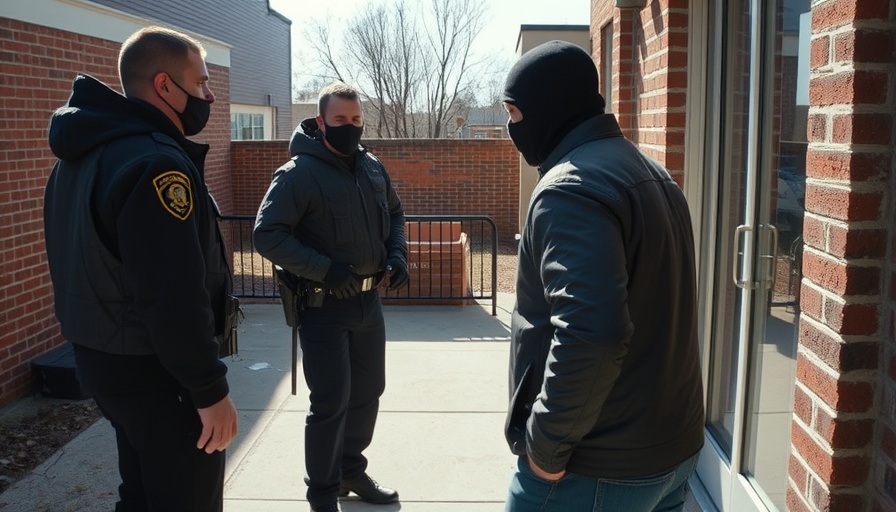
The Incident: A Disturbing Breach of Court Safety
On April 14, 2025, in Woburn, Massachusetts, a seemingly routine day at the courthouse devolved into chaos when Nicholas Akerberg, 28, entered fully equipped with a helmet, gas mask, tactical gear, and sunglasses. The suspect, caught on security cameras, unleashed multiple canisters of pepper spray on court officers, a police officer, and an assistant district attorney. His violent actions not only escalated tensions within the courthouse but also left both officers and bystanders shaken.
Akerberg's aggressive behavior included punching and shoving individuals, prompting several officers to intervene and subdue him. According to the Middlesex District Attorney's office, Akerberg was later transported to a hospital alongside his victims, all of whom were treated and subsequently released. The suspect now faces serious charges, including six counts of assault and battery with a dangerous weapon, among others. This incident begs the question: how are law enforcement agencies ensuring the safety of their personnel and the public in judicial settings?
Historical Context: The Rise of Courtroom Violence
While this incident may seem drastic, it is part of a troubling trend regarding violence in courthouses across the nation. Historical data indicates an uptick in confrontation and physical assaults within legal facilities. The Justice Department has reported that threats and actual acts of violence against judicial officers, including attorneys and witnesses, have surged. This alarming statistic underscores the urgent need for enhanced law enforcement training and courtroom security protocols to mitigate such risks.
Implications for Police Training and Equipment
The actions of Akerberg highlight the critical importance of proper equipment and preparedness for law enforcement personnel. As evident from this event, court staff are increasingly at risk and may need to consider advanced protective equipment, such as body cameras, body armor, and effective defensive tools. Law enforcement agencies must invest in training their officers not only to react to sudden violence but to proactively assess and eliminate potential threats before they escalate.
Community Reactions and the Call for Reform
Overall, community responses to incidents of courthouse violence are mixed, with some advocating for stricter measures while others caution against the increased militarization of police forces. Akerberg's case may indeed serve as a catalyst for discussions on law enforcement reform, particularly concerning officer training, community engagement, and the efficacy of existing court security measures. Citizens are demanding both greater accountability from police forces and enhanced safety measures within public spaces.
Future Predictions: Lessons and Opportunities for Change
The events in Woburn may prompt a shift in how law enforcement entities approach security regulations. Experts suggest that a comprehensive audit of courthouse security—including physical barriers, emergency protocols, and personnel readiness—is essential. As the policing landscape continues to evolve, institutions should examine progressive models that integrate technological innovations to bolster officer safety and streamline crime prevention strategies.
Conclusion: Taking Action for Safety
In conclusion, Nicholas Akerberg's attack serves as a chilling reminder of the potential dangers faced by law enforcement professionals and judicial staff. It is imperative for police departments to adopt a proactive stance in improving safety measures and advocate for necessary reforms to prevent similar incidents in the future. Engaging in open discussions about officer wellness and public safety is key as communities seek a collaborative approach to crime and violence in judicial settings.
 Add Row
Add Row  Add
Add 

 Add Element
Add Element 




Write A Comment